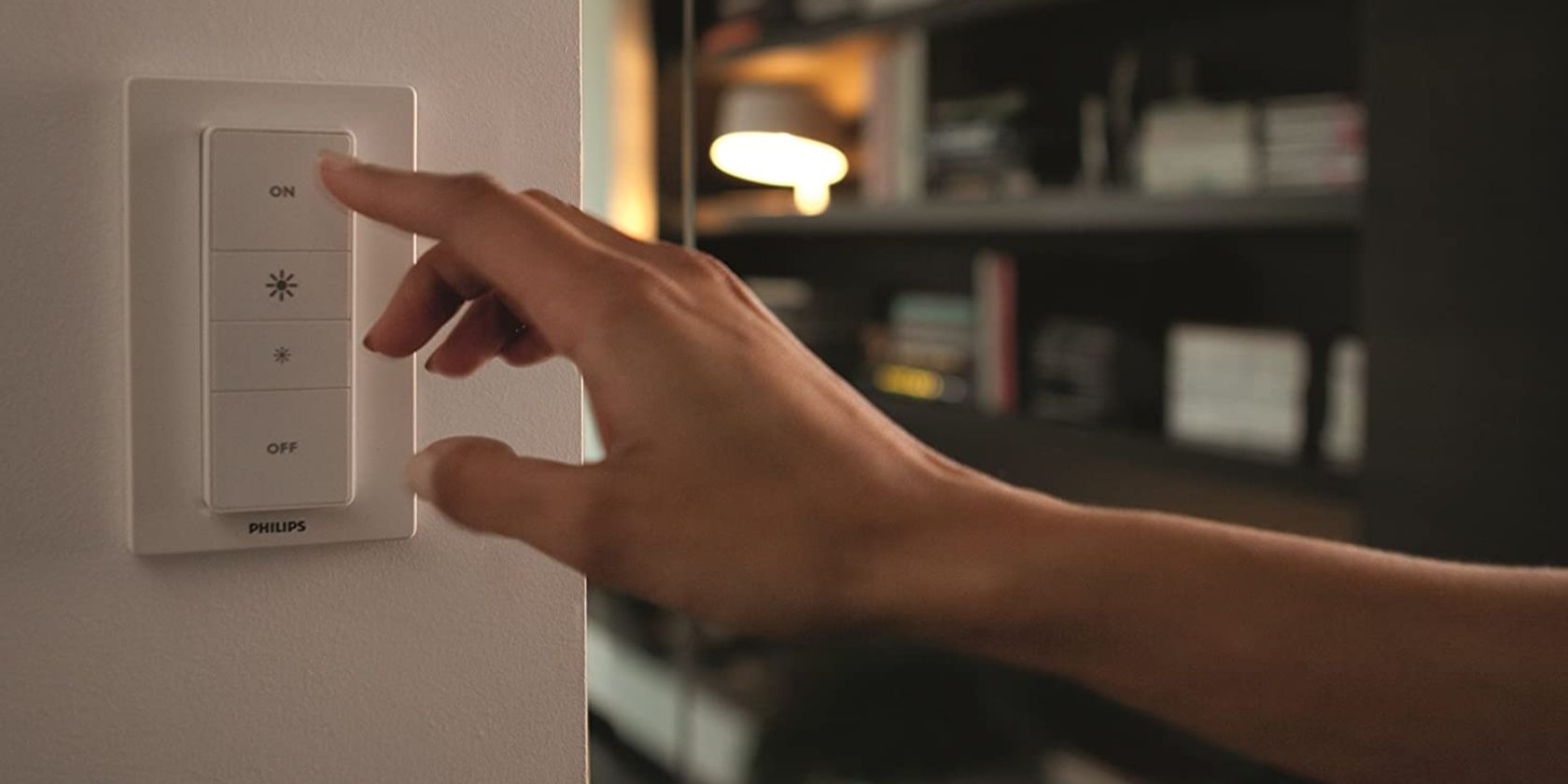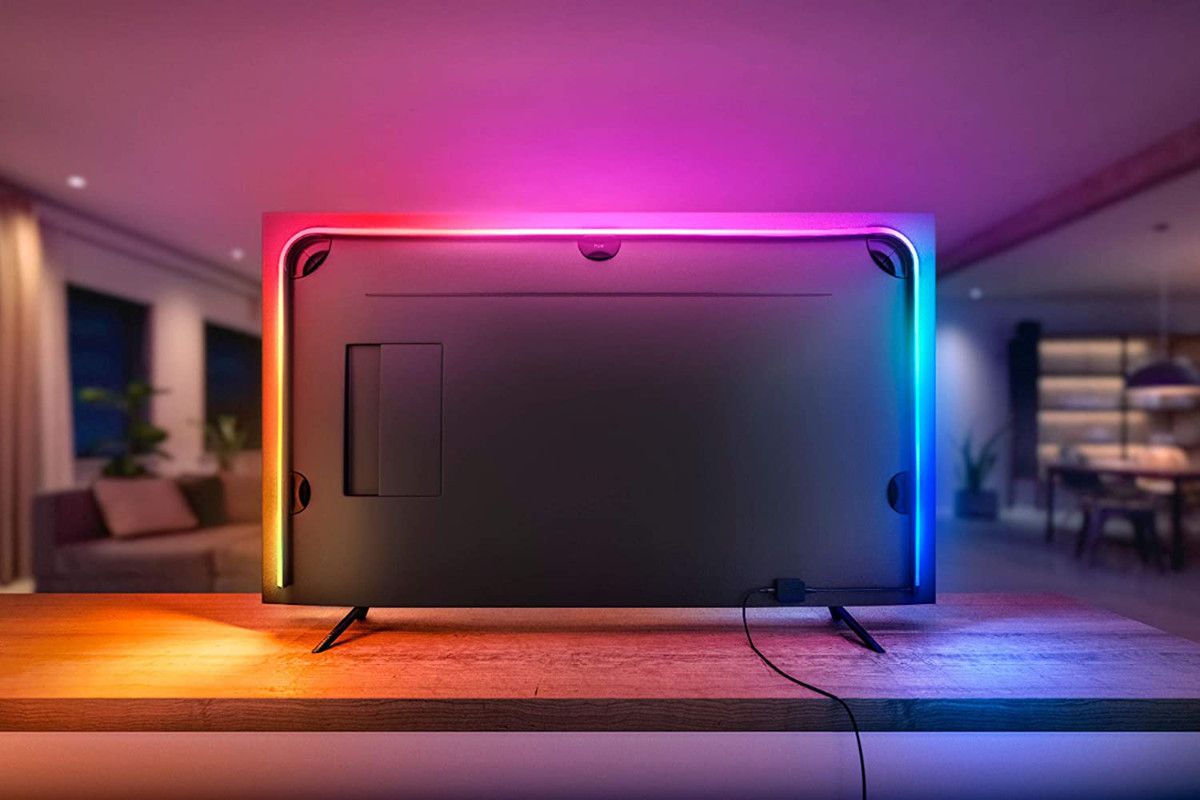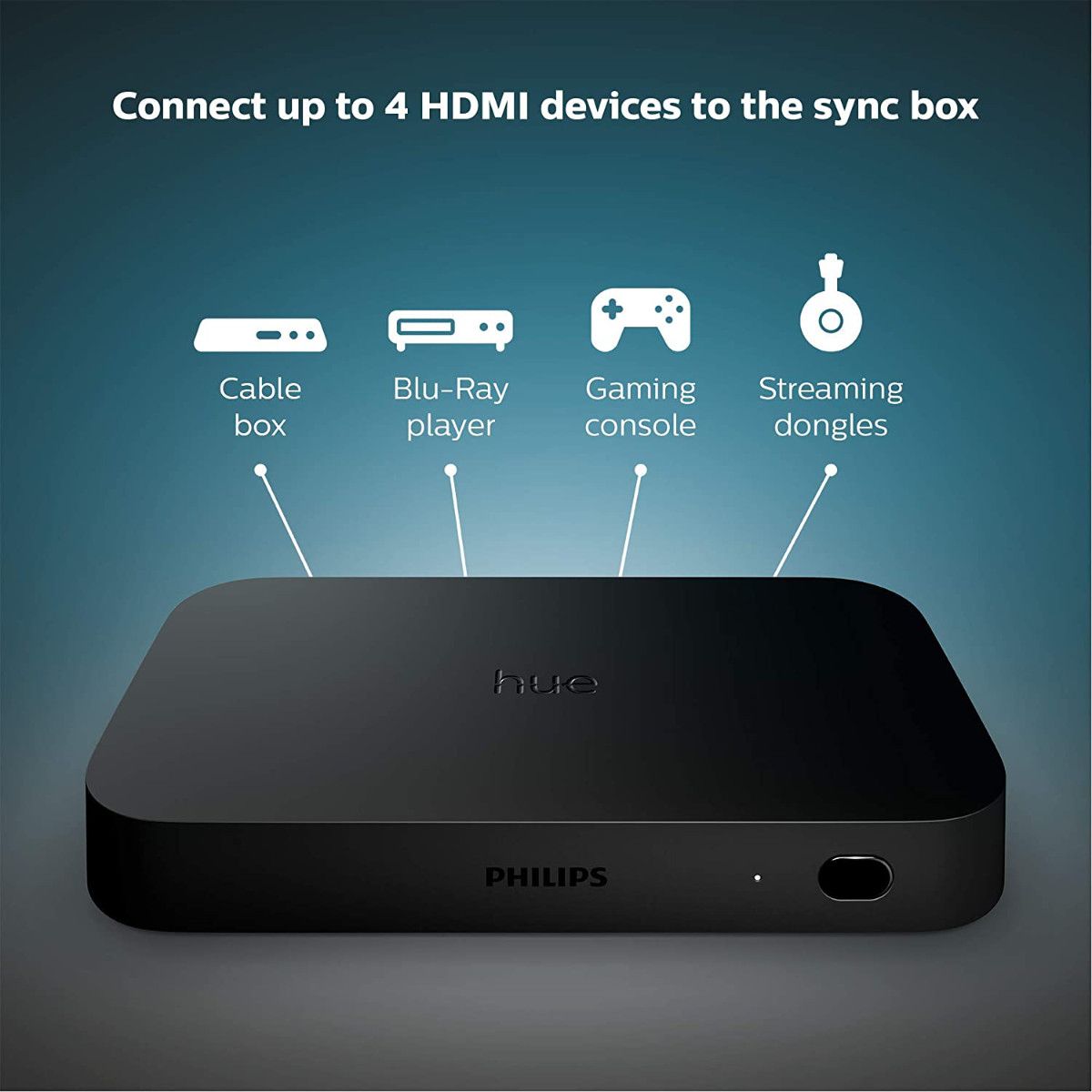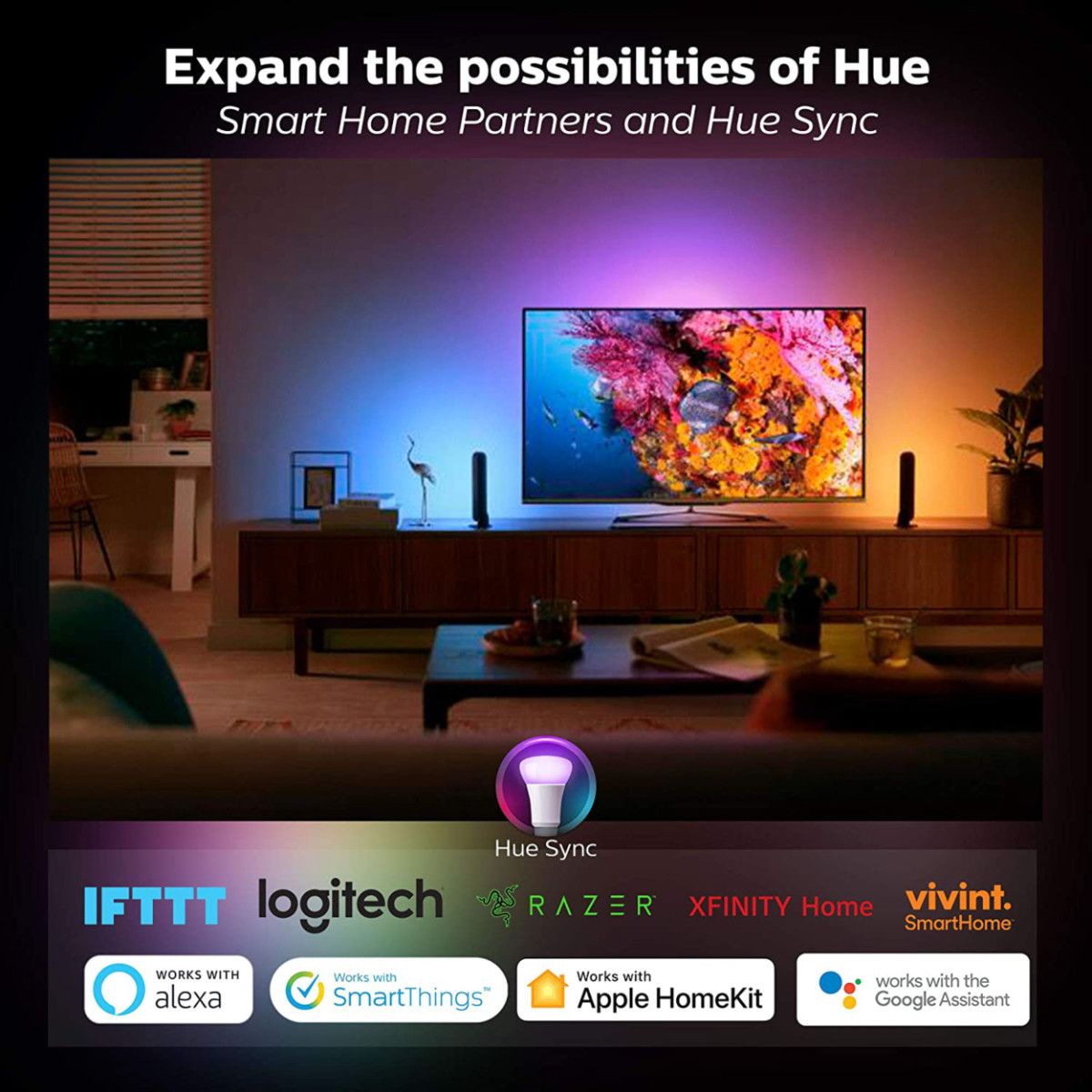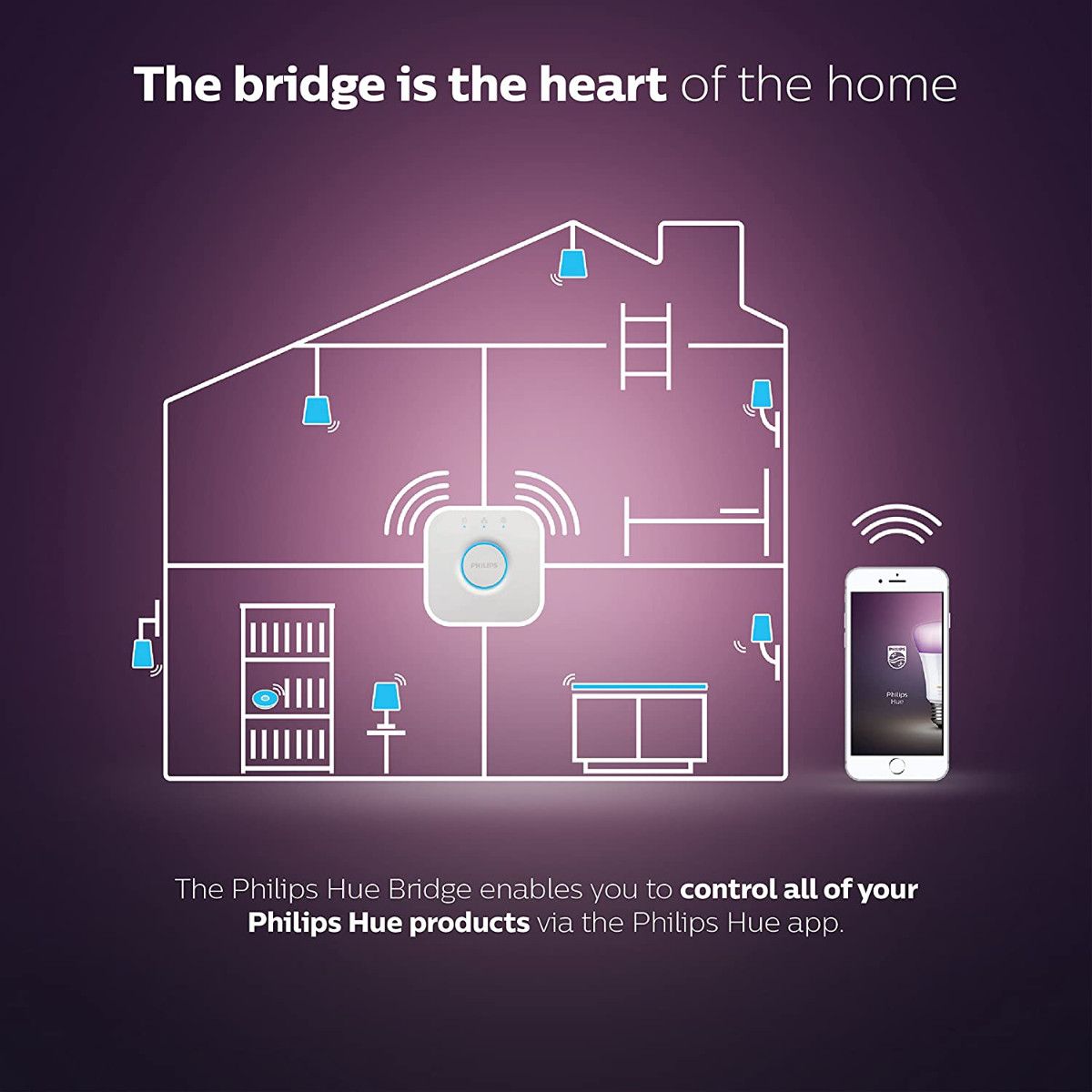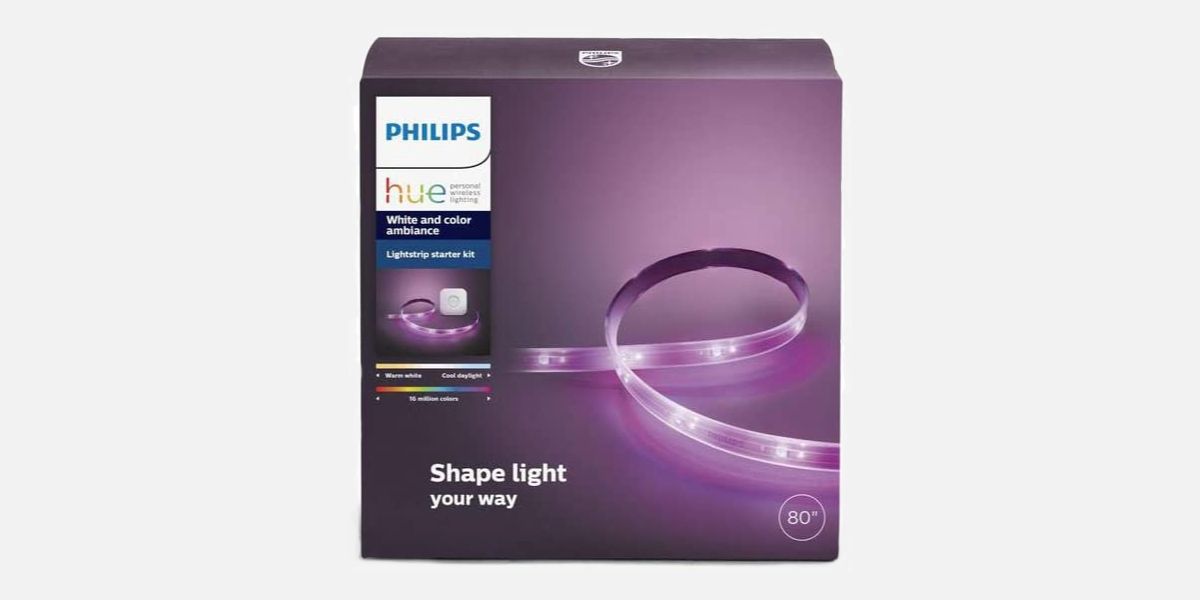Philips Hue has dominated the smart home landscape since its arrival in 2012. What started out as a line of simple lightbulbs has bloomed into a whole-home solution for both indoors and outside.
We're highlighting what Philips Hue has gotten right, and a few things that the brand should consider if it expects to continue its domination of the smart home market.
What Philips Hue Got Right
1. Customizability
One of the best features of the Philips Hue line is customizability. Hue lights can be setup in a myriad of different configurations, colors, and in countless applications. Expanding an existing system is easy and only requires the purchase of more Hue lighting products.
Aside from Hue devices, there's no additional hardware to set up, and no hacking things together. Just open the app, add your device, and Hue takes care of the rest. Except for some issues with firmware updates, the system is plug-and-play.
Customizability is one of Philips Hue's strongest features, and as more products are added to its lineup, that will only increase.
2. Innovation
Would you like to watch video that lets you sink into a room-filling experience?
The HDMI Sync Box from Philips Hue does just that. With the Sync Box, users can add custom lighting to their space that matches the external media on their computer or television screen.
The Sync Box is an innovative product that proves Philips Hue's commitment to avoiding stagnation. Innovation is what keeps Philips Hue at the top of the smart home manufacturer category.
3. Compatibility
There are certain benefits to having an industry-leading brand. One of those benefits is compatibility.
The Works With Philips Hue product page lists gaming gear from companies like Razer, voice assistants like Amazon Alexa and Apple's Siri, and smart home devices from Samsung, Logitech, and August, just to name a few.
This level of compatibility means that smart home consumers have much more choice than they might with Hue competitors.
Users purchase a Philips Hue system because they want to use the products they already have to make their experience better. Hue accomplishes this feat beautifully.
4. Zigbee Connectivity
One of the smartest moves that Philips made was to use Zigbee to allow the Hue Bridge to communicate with Hue smart devices. Zigbee's mesh network is exceptionally fast, and it doesn't depend on a router or Wi-Fi endpoint like some smart devices.
Zigbee also uses AES encryption and is fairly secure.
The protocol is less finicky than Bluetooth, and more stable than Wi-Fi. It operates on a low-duty cycle which prolongs battery life. Zigbee is also standardized, which means that if you purchase other devices that support the protocol, then those devices can communicate with Philips Hue.
According to the Zigbee Alliance's web page, 300 million products use Zigbee around the world. With that many devices in service, Zigbee has support from a broad scope of developers, software engineers, and device manufacturers.
This support means that Zigbee isn't going anywhere soon, even with emerging competitors like Thread arriving on the scene.
What Philips Hue Got Wrong
1. Planned Obsolescence
Philips Hue must still push firmware updates to devices over-the-air to keep them secure and working properly. By using an over-the-air model for firmware updates, Philips controls when its products receive critical patches.
This also means that Philips may decide to stop supporting older devices in favor of newer models. This is exactly what happened in 2020 with the first-generation Hue Bridge.
Owners of the first Bridge may still use the unit, but the ability to remotely control Hue products outside of their home is no longer supported. On the other hand, the original Hue Bridge was 8 years old, which is ages in the world of technology.
While planned obsolescence is a trend for many technology companies, the potential annoyance can be frustrating. Especially when a user spends a small fortune on a product that only lasts a few years.
But can users adequately future-proof the smart devices they buy or does technology change too fast to provide longevity in the market?
Regardless of the answer, the ability for the company to eliminate support for a product after only a short time is something that rubs many users the wrong way.
2. Price
If there's one complaint that you'll hear again and from anyone considering Philips Hue, it's price. Price seems to be the largest barrier to entry for adding Philips Hue lighting to your home.
Many quality devices are available at price points much lower than Hue.
Perhaps the expense is due to the branding, which is as ubiquitous to smart homes as the smart bulb itself. Another possible reason is the perception that a higher-priced product is of higher quality than a low-priced product of equivalent design.
Either way, someone is still buying enough Hue devices to keep the product line thriving.
3. Lack of Replacement Parts
If the power supply on your Hue light strip fails, it is impossible to find a replacement from Philips. The company doesn't sell them unless you're buying a new device.
While you may find aftermarket adapters from a third party, the inability to replace broken components directly from Philips proves disappointing. It also forces users to turn to replacements that aren't designed to work specifically with Philips Hue products.
By not allowing the replacement of something as simple as a power supply, it seems Philips would rather force users to purchase another expensive product than to try and repair a broken one.
Don't get us wrong, Philips does back their products with a warranty. But users whose tech fails outside of the warranty period are left to comb sites like eBay and Offerup to find replacement parts, or give up and buy a new device altogether.
Philips Hue Continues to Shine
Philips Hue is still an excellent choice for smart home products. Despite the expense associated, the Hue lines offer a wide range of compatibility, security, and ease of use.
The company's innovation continues to lead the industry and set new smart home trends. Though Philips has room for improvement, the brand has changed how consumers view smart home devices.
But with other companies beginning to offer more affordable and similar products, it remains to be seen whether Hue can continue its dominance.
And if you're looking to control your Hue lights from your smartphone, there are a number of great apps available.

